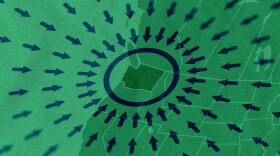Even though the damaged nuclear reactors continue to cause problems in Japan, the amount of radiation reaching the Pacific coast is dropping.
Public health officials say the radiation threat has been more psychological than physical. They're proud of how they've responded to the nuclear power plant crisis in Japan.
According to a summary presented to the State Board of Health on Wednesday: On the first weekend after the tsunami damaged several nuclear reactors, Washington Department of Health staff was already showing off its radiation monitoring equipment to the media.
The detection system is a legacy of the Cold War, and of having the Hanford nuclear weapons site in the state. The detectors are sensitive enough to find signs of secret bomb tests anywhere on the planet. Health Secretary Mary Selecky said her staff told her they expected to find signs of radiation from Japan. Sure enough, they did.
"Just as my staff informed me: 'Mary you're going to see it first in the air,' and we did. 'Then you are going to see it in rainwater.' We did. 'And then you are going to see it in milk," says Selecky. Those are the three areas that are most closely monitored for radiation.
That first detection in milk, from a sample taken in Spokane, heightened fears locally. At one point, nearly 50 staff at the Health department were working on radiation questions.
Radiation travels by clinging to dust particles that float through the atmosphere, and they descend to the ground when raindrops capture them. The fastest way for them to show up in the food chain is milk, because of the rain falling on grass that cows eat.
Selecky says because radiation is invisible and highly technical, the mere word has the power to terrify people – and rumors don’t help. That said, radiation levels here have not reached levels considered hazardous to people or animals. And the levels have been dropping rapidly since a peak around March 20th.
"We are five thousand miles away and we have ... a public health response, but it's not because we have here levels of radiation that cause a health concern," said Maryanne Guichard, deputy health director in charge of environmental health, in testimony. "It’s the psycho-sociological impact of people who are just terrified of radiation."
Overall, in terms of hazards to humans, the disaster is considered still far less serious than the Chernobyl disaster of the 1980’s. However, it may be more complicated to cleanup.
The Department of Health is maintaining a set of Frequently Asked Questions about the health risks from the disaster, as well as a list of other resources.







